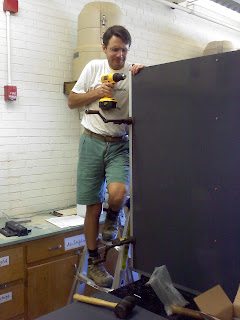So the other day, Raleigh got a lot of rain. Creeks rise out of their banks and people get flooded, it happens. However, events such as this, where you see sediment-laden water coming out of a storm pipe should not happen. Look at the upstream part of the creek to the left of the picture (click on the photo for full size). It is relatively clear even after a large rain event. Compare it to the muddy discharge coming out of the storm pipe. Hmm, anybody want to guess the number one pollutant in North Carolina's streams and waterways?
We figured another shot of the creek would help bring home the point. By the way, a stream restoration was just completed on this creek a couple of months ago.
We found that runoff from a construction site about a 1/2 mile upstream was causing all of this sediment loading. The bright side to all of this, I guess Ecological Engineers have job security for a while!






